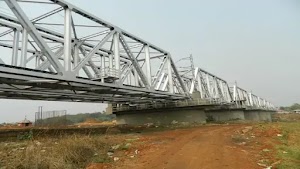IR-BMS a web base IT application of the Indian Railway. It was launched by Union Railway Minister Sri Piyush Goyel on 12.07.2018 after the Mumbai bridge collapsed on the Railway track. This web-based platform shows bridge master data, works data, information regarding inspection, monitoring, and maintenance of bridges. It is hosted on ircep.gov.in and designed & developed by the Centre for Railway Information System (CRIS). It can access with the same login ID/Password that is being used for accessing Track Management System (TMS). It has a large database with data over 1.5 laks minor, major and important bridges being stored.
Below is the list of available functions in the BMS application:
1. User Management
- SSE/Works
- SSE/Bridge
- Bridge master
- RAW/RAT master
- Past bridge inspection
- Entry of last inspection date (ADEN inspection of FOB, 3rd party audit, and Technical inspection of BRI)
- Annual bridge inspection of ADEN
- RAW/RAT inspection
- ADEN bridge inspection defect compliance
- RAW/RAT inspection defect compliance
- Message Center
7. Miscellaneous
- Inspection Board (Station Wise)
Who Inspects the Bridge?
As per the instructions, the inspection of Railway bridges on any section is carried out by the following personnel:
Inspection by PWI/IOW
The PWI/IOW of the division inspects all the bridges in his jurisdiction once a year before the monsoon. Both the inspectors after inspection give a certificate to the AEN in regard to having inspected the bridge and referring any defects or problems to AEN for his decision.
Inspection by Bridge Inspector
The Bridge Inspector inspects all-steel girder bridges of 12.2 meters and above span length in his jurisdiction once in five years. Inspection of new welded girders is to be done within one year of instruction and early steel girders have to be inspected every year, particularly their flooring system. The Bridge Inspector also gives a certificate to his ABE confirming his inspection of all the bridges and referring any problems for his decision.
Inspection by AEN
Asstt. Engineer inspects all the bridges in his jurisdiction once in a year immediately after the monsoon. AEN may refer any point to the DEN for his decision along with his certificate of having inspected all the bridge on his section
Inspection by DEN and CE
The Divisional Engineer has to scrutinize the bridge inspection register by his AEN after inspection and has to give his decision on any point referred to him. The chief Engineer concerned also scrutinizes the register and gives his orders on any point which might have been referred to him for his decision
Inspection by ABE
The Asstt. Bridg Engineer should scrutinize the register of all important bridges as well as major bridges on his jurisdiction after the inspection has been conducted by Bridge Inspector
Inspection by Dy. CE/Bridge
The Dy. Chief Engineer (Bridge) shall examine the register which has been filled up after inspection by Bridge Inspector and necessary orders have given in it by the ABE.
Inspection by CBE
The Chief Bridge Engineer may visit any bridge on the railway and also which might have been referred to him for his inspection and decision.


















1 Comments
How many modules are there in IRBMS application? What is the names. Among them how many has not been implemented sofar?
ReplyDeleteDon’t hesitate to reach out with the comment above. Your email address will not be published.